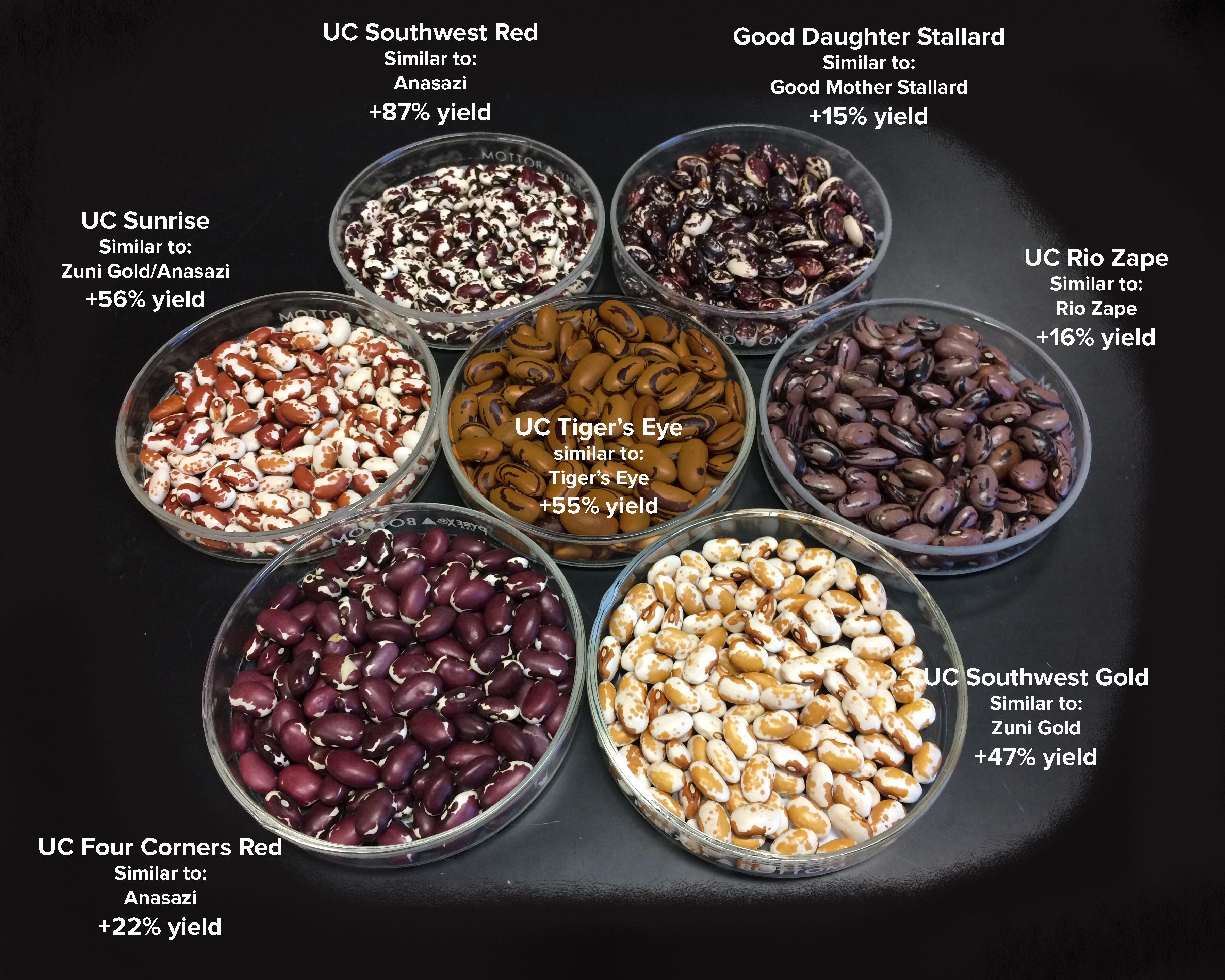
Research Adviser: Christine Diepenbrock
Team Lead:
Starting in 2023, the SCOPE lima and common bean projects re-focused on breeding beans for dry farming at UC Santa Cruz, using germplasm developed by the first iteration of the SCOPE dry bean breeding projects. In addition to evaluating improved heirloom common bean cultivars, the SCOPE team will also conduct nutritional characterization of these beans under different management environments for grain protein, fat, starch, moisture, and potentially also total dietary fiber and total phenolics.
Want to learn more about this project? Join the annual UC Dry Bean Field Day at UC Davis in late summer.
Common Bean (2015-2020)
From 2015-2020 the common bean project led by then graduate student Travis Parker and professor Paul Gepts focused on combining the best culinary qualities of heirloom varieties with the improved resource-use efficiency and disease resistance of major commercial dry bean types. In the US, cultivars of dry beans mainly fall into the pinto, navy, small black, pink, and red kidney types, but other market classes with more vivid seed coat patterns are not represented.
Travis crossed heirloom bean varieties with commercial varieties with complementary traits. Selections were made for progeny that combined the best field and culinary traits, leading to the release and registration of five new varieties in 2020.
In addition to SCOPE, this project received financial support from The Clif Bar Family Foundation, Lundberg Family Farms, and Western SARE (Award# 2016-38640-25383, subaward 200592-448)
More information about the new varieties and how they were developed can be found here: https://youtu.be/h_QFqQTmejw
Gallery of newly registered varieties:
UC Rio Zape:
UC Southwest Gold:
UC Southwest Red:
UC Sunrise:
UC Tiger’s Eye:
This work has also received financial support from The Clif Bar Family Foundation, Lundberg Family Farms, and Western SARE. This material is also supported by the National Institute of Food and Agriculture, U.S. Department of Agriculture, under award number 2016-38640-25383 through the Western Sustainable Agriculture Research and Education program under subaward number 200592-448 [project number GW18-062]. USDA is an equal opportunity employer and service provider. Any opinions, findings, conclusions, or recommendations expressed in this publication are those of the author(s) and do not necessarily reflect the view of the U.S. Department of Agriculture.
